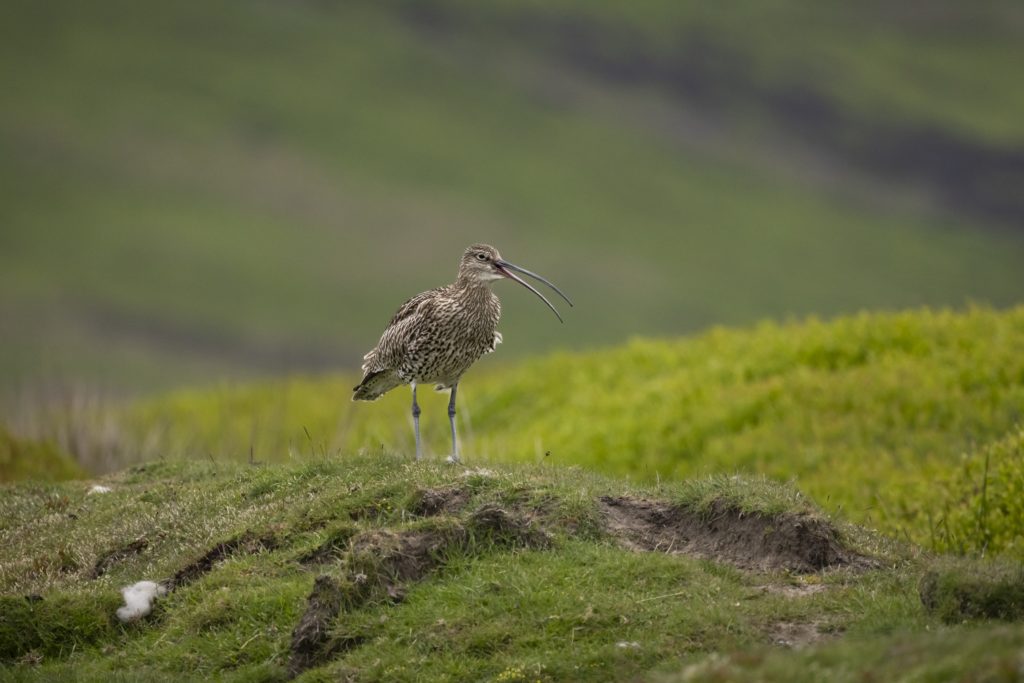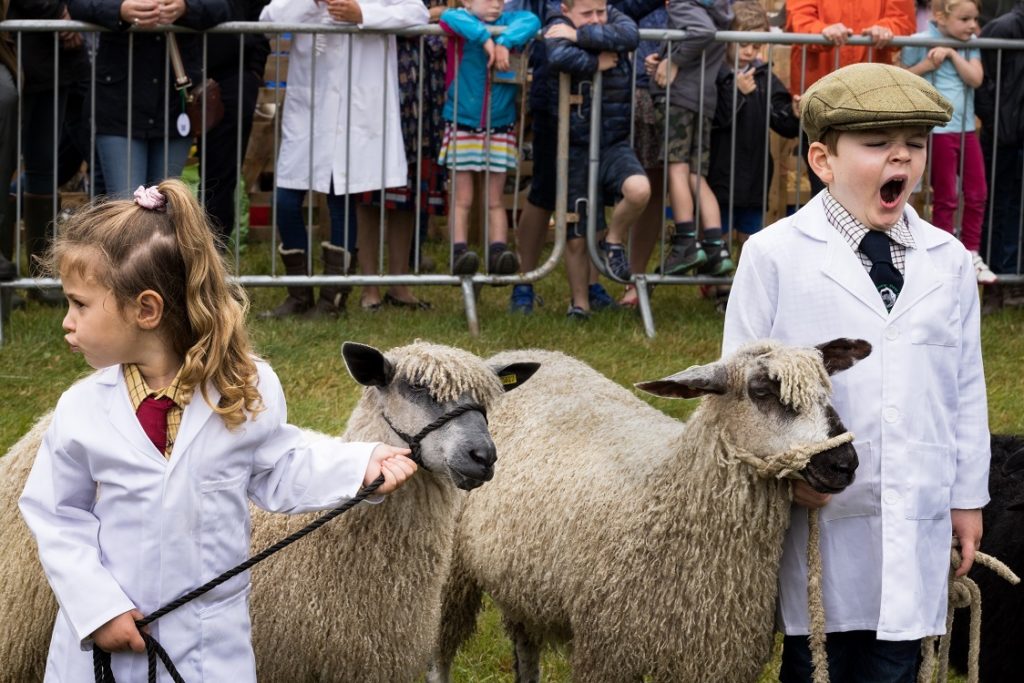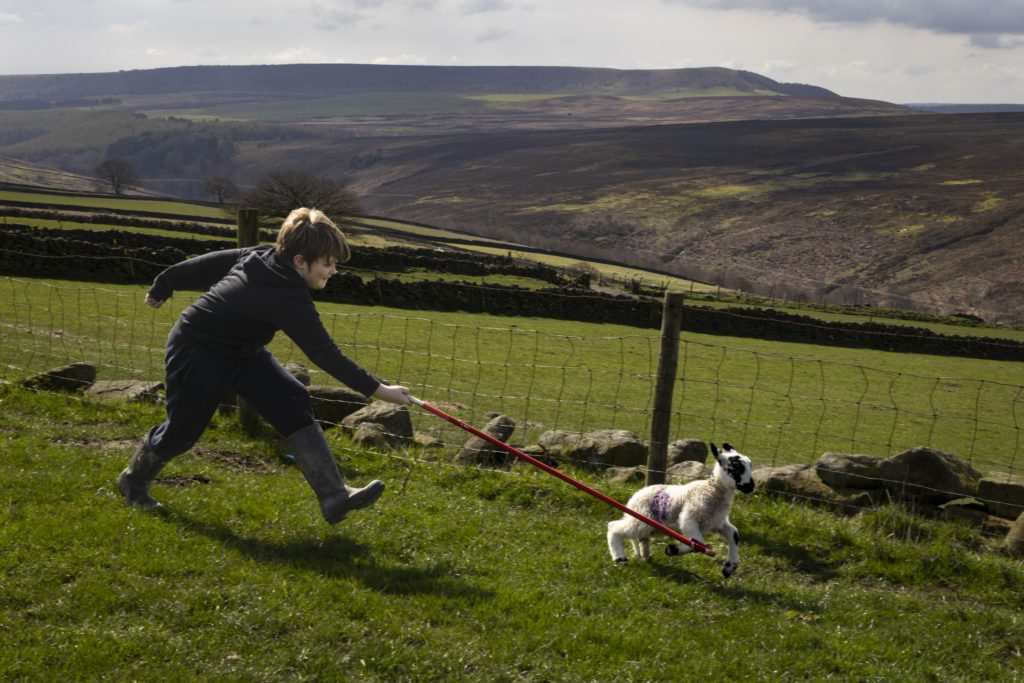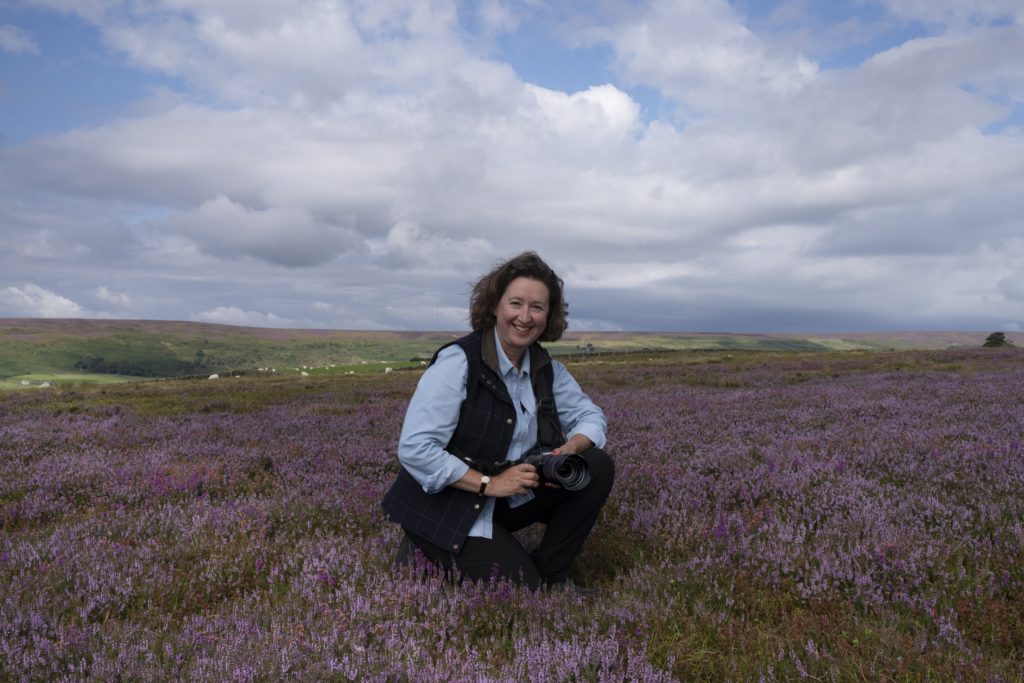
FIELDS, Folds and Farming Life, Nunnington Hall’s exhibition by Yorkshire documentary, travel and portrait photographer Valerie Mather, captures candid moments from a year in the lives of upland farmers in Bransdale on the North York Moors.
“Photography has the power to capture a moment in history, and my hope is that these images paint a picture of the spirit, stoicism and joy of these local farming families and communities today,” says Valerie, a former lawyer. “I wish to share some of the joy and inspiration about farming and nature that I discovered from my year in Bransdale.”
Bransdale, one of the North York Moors’ most isolated valleys with high moors on all sides, is cared for by the tenant-custodian farmers, the National Trust and its volunteers alongside the National Park authority.
The combination of Valerie’s work and specially produced films and artwork reveals the hard work and determination of the farming community in navigating the ever-changing agricultural world to achieve a better farming future for people, the environment and wildlife.

Here Valerie answers CharlesHutchPress’s questions on photography, farmers and the future of farming
Speaking with the Dowsland family, from Moor Houses, Bransdale, their first concern was whether you would be ‘getting in the way of their daily routines’, but they grew quickly to enjoy your visits. “Oh, Val’s at the breakfast table again”! How do you build up that bond of trust with your subjects, especially when farmers can be taciturn?!
“I think being genuinely interested in the people I photograph goes a long way towards getting people comfortable. Also, helping out where needed. I helped out on a gathering in of some 300 sheep from the moor when one of the families was shorthanded, instructed by Nathan, their young son!”
If the two public views of farmers are that they are either “problematic” or “like on Channel 5” in the Amanda Owen and All Creatures Great And Small series, how have you set about changing those perspectives/misconceptions?
“Documentary photography is, for me, all about genuinely candid unposed moments, as opposed to posed portraits. There is no make-up or dress rehearsal! I am inspired by certain quotes and one of my favourites is by Paul Caponigro: ‘It’s one thing to make a picture of what a person looks like; it’s another thing to make a portrait of who they are’. That is what interests me as a photographer, no matter how much longer it takes in order to capture a genuine moment.”

Where does a traditional Yorkshire moorland farming community fit into increasingly fractured, no-sense-of- community-anymore Britain?
“I was initially drawn to document the farming community in my area when I attended a local agricultural show in the summer of 2019 and witnessed what a strong sense of community there is amongst farmers.
“I think documentary photography plays an important role, telling stories and allowing us an insight into communities other than our own. Through that we can hopefully appreciate how we all have a place in the world and have a greater understanding of other points of view.”
What did you learn from your previous lowland farming photography project that you could put to good effect in this upland series?
“Patience and pacing my energy levels. Farmers work long hours and staying in the moment requires concentration, otherwise something magical happens and you miss it, like the birth of a lamb for example.”

What are the characteristics of upland farming that struck you the most?
“That the animals live outside most of the year and roam free on the moors but are ‘bound’ to stay in certain areas via ‘invisible boundaries’, which the farmers call ‘hefting’.”
The bond between farmer and stock and farmer and land are both central to your exhibition. Discuss…
“One young farmer told me that he had spent a year working abroad and then lived for a spell in Kirkbymoorside, but eventually he had to return to the Bransdale valley he was born in. He used the phrase that he was ‘hefted to the land’.
“Whether you are born into it or not, in my experience, farming is a vocation and not simply a job.”

What did you discover in your upland farming encounters that most surprised you?
“I was surprised to learn that having a mix of cattle and sheep grazing on fields adjacent to moorland produces an ideal environment for ground-nesting birds by producing both long and short grass. Under-grazing (not enough livestock) or abandonment of pasture (no livestock at all) can lead to dense thatch, which is unsuitable for the endangered Curlew to nest amongst. Which means: no cattle, no Curlew.”
What is the future of upland farming?
“With only three per cent of farmers under the age of 35, our farming future is precarious across the country. Indeed, it was those alarming statistics that made me want to see for myself what life was like for smaller farmers in and around Yorkshire.

“Upland farmers have an important role to play in nature-friendly farming and the farmers I spent time with were actively engaged, for example, with breeding conservation initiatives for the endangered ground-nesting birds, such as the Lapwing and the Curlew.”
Do you have a favourite photograph in the exhibition?
“My personal reactions to the images are, of course, coloured by the emotions I felt when pressing the shutter each time and the engagement with my subjects on that particular day. An image that stands out for that reason was made during a lunchbreak from making silage on a scorching hot July day. The farm workers sat in the shade of their giant machines, eating sandwiches and laughing about how it beat sitting in an office.

“As talk turned to the rapidly rising costs of farming, their laughter and smiles gave way to silent contemplation. A reminder for me of the importance of valuing our British farming community and how shopping locally can make a difference.”
What will be your next documentary photography project?
“Too soon to say! I’ve been focused on this project for the past two years, so I need to take some time out, enjoy teaching my workshops, and wait for inspiration to strike. To make anything meaningful, one has to feel passionately about a subject.”
Fields, Folds and Farming Life, Nunnington Hall, Nunnington, near York, on show until December 17; 10.30am to 5pm, last entry at 4.15pm, with reduced winter hours from November 24. No booking is required; exhibition included in admission price at this National Trust property.
Valerie Mather’s notes on an exhibition

HOW DID THIS PROJECT OCCUR?
“My journey into the world of farming was originally inspired by an article in Country Life back in 2019, which said that only three per cent of UK farmers are under 35 and the average age is 59.
“These alarming statistics made me want to see for myself what life was like for small farms in Yorkshire, so I set out to build relationships and visit the farmers in my local area.
“That resulted in a book of black & white photographs in 2021, which led to the National Trust inviting me to spend a year exploring the working lives and environment of their tenant upland farmers in Bransdale, on the North York Moors.”
INSPIRATIONS
“I am inspired by the work of James Ravilious (son of the artist Eric) and his important photographic record of rural England in the 1970s.”

PROJECT THEME
“The importance of balance between nature and farming and land management. Success relies on finding a balance in an ever-changing industry.”
WHY DID I WANT TO SHARE THIS PROJECT?
“Photography has the power to capture a moment in history and my hope is that people will enjoy the exhibition at Nunnington Hall and the accompanying book, available from www.valeriematherphotography.co.uk, and will recognise the importance of valuing our British farming community and how shopping locally can make a difference.”
ADVICE FOR OTHERS
“Today everyone has a camera in their phone. Digital photography means it doesn’t cost anything when you press the shutter. However, to make an image that another person might feel an emotional response to involves passion and understanding on the part of the photographer about their subject.
“One of my favourite quotations is: ‘It’s one thing to make a picture of what a person looks like; it’s another thing to make a portrait of who they are’.”

BENEFITS OF PHOTOGRAPHY AND WORKSHOPS
“Photography can be very beneficial for our mental health and well-being. There is a lot of joy to be found in the world and a camera is a great way to share that joy with others.
“I love helping people to understand their camera through my workshops. There is a saying that the best camera is the one you have in your hand. I think it’s truer to say that the best camera is the one that you understand how to operate.
“We all know how to work our phones but few of us take the time to learn how to use our camera and get off the Auto settings.”
AI TECHNOLOGY/ROLE OF DOCUMENTARY PHOTOGRAPHY TODAY
“The new AI technology may offer a multitude of artistic opportunities, but it does mean more than ever before that documentary photography has an important role to play in capturing our lives today and in asking the complex questions.
“There are no easy answers but if a photograph gets us to consider the questions in the first place it has done its job.”

